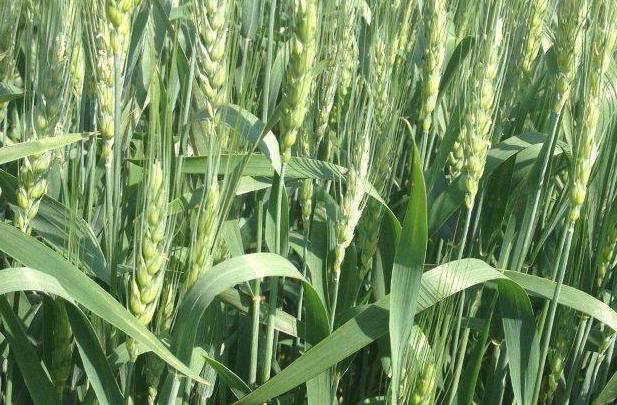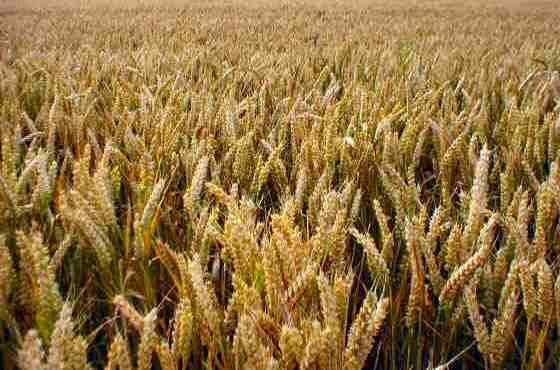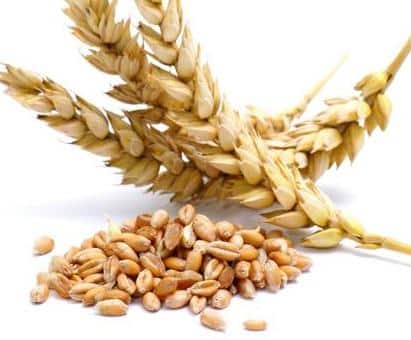Wheat Farming Information Detailed Guide:-

Introduction of Wheat:- Wheat is the main cereal crop and mainly a rabi (winter) season crop in India. Indian wheat is largely a medium protein,soft/medium hard, and white bread wheat. The major increase in the productivity of wheat has been observed in the states of Haryana,,Punjab, and UP. Higher area coverage is reported from Madhya Pradesh in recent years.
Health Benefits of Wheat:- Some of the health benefits of whole wheat are as follows.
- Wheat has high source of protein.
- Wheat has good source of fibre.
- Wheat is a good source of manganese, and magnesium in its unrefined state.
Commercial/Improvied Varieties of Wheat :- For Commercial wheat varieties developed in India Read Here.
Agro-Climatic conditions for Wheat farming:- Wheat crop has wide adaptability and It can be grown in the tropical and sub-tropical zones and also in the temperate zone and the cold tracts of the far north ,beyond the 60 degree north altitude .
- Does wheat crop tolerate cold? Yes, wheat can tolerate severe cold and snow and resume growth with the setting in of warm weather in spring season .It can be grown from sea level to as high as 3300 m. Wheat cultivation is suitable with, moist and cool weather during the major part of the wheat growing period followed by warm, dry weather to make the wheat grain to ripen properly.
- At what temperature is good for Wheat seed germination? The ideal temperature range for ideal germination of wheat seed is 20C to 25C though the seeds can germinate in the temperature range 3.5C to 35C.
- What areas are not suited for Wheat cultivation? Wheat cultivation does not suit for warm and damp climatic areas. During the heading and flowering stages, excessively low or high temperatures and drought are harmful to wheat.
Soil requirement in Wheat Farming:- Wheat is grown in wide range of soils in India. Soils with a loamy texture or clay loam, and moderate water holding capacity are best for wheat cultivation. Soil should be neutral in its reaction. Wheat sensitive to water logging, so heavy soils having good drainage are best suited for wheat farming. Wheat can also be successfully cultivated on lighter soils by providing proper irrigation and required nutrients.
Field preparation in Wheat Farming:- To prepare a well pulverized seed bed,1 deep ploughing followed by 2 or 3 harrowing with disc or tines and 2 or 3 planking should be given. To protect your wheat seedling from gujhia weevil and white ants mix aldrin 5% dust in soil at 25 kg /ha at last ploughing time. 35 to 40 kg urea /ha Should be given to improve Wheat seed germination.
Soil treatment in Wheat farming:- Azatobacter 2.5 kg + Phosphetica culture 2.5 kg + trycoderma powder 2.5 kg mix with 100 to 125 kg Farm Yard Manure (FYM) & broadcast at the time of last ploughing.
Seed rate and its treatment in Wheat farming:- Seed rate in wheat farming as follows:
- 100 kg/ha – For normal condition.
- 120 kg /ha – For coarse size grain.
- 125 kg /ha – For late sowing.
- 5 kg carbendazim or 2.5 kg thiram or 5 gram trycoderma spore at 1 kg seed.
Sowing time for Wheat farming:- Best sowing time for wheat plantation is from November to December. There may be slight variation for each region. To reduce loss caused by late sowing, One Should soak seeds in water overnight before sowing, closer spacing,using higher seed rate, shallow sowing (2 cm to 3 cm) and spreading thin covering of Farm Yard Manure soon after sowing.
Spacing between plants Wheat farming:- Row to row spacing should be 23 to 24 cm. The late sowing wheat should be sown in rows spaced 15 cm to 18 cm.
Irrigation in Wheat farming:–
- 1st irrigation should be given at 3 to 4 weeks after sowing.
- 2nd irrigation should be at 40 to 45 day after sowing.
- 3rd irrigation at 60 to 65 day after sowing.
- 4th irrigation at 80 to 85 day after sowing.
- 5th irrigation at 100 to 105 day after sowing.
- 6th irrigation at 15 to 120 day after sowing.
Weed control or Inter culture operations in Wheat farming:-
Only Grassy Weeds:
Fenoxaprop-ethyl @ 80 to120 grams a.i./ha in 250 to 300 liters of water / ha.
Clodinafop @ 400 grams/ha (60 grams a.i./ha) in 250 to 300 lit of water / ha.
Only Broadleaf Weeds:
Metsulfuron methyl @ 4 grams a.i. / ha. 250 to 300 lit of water /ha.
2,4-0 @ 500 grams a.i./ha in 250 to 300 lit of water /ha.
Both Broad Leaved and Grassy Weeds:
Metribuzin @ 175 grams a.i./ha in at least 500 lit of water /ha.
Sulfosulfuran @ 25.0grams a.i./ha in 250-300 lit of water /ha.
Combination of isoproturon & 2,4-0 may also be used for the control of mixed weed population in resistance free area.
A mixture of Sulfosulfuran at 25 grams/ha and metsulfuron methyl at 4 grams/ha in 250 to 300 lit of water /ha.
Application of Fertilizers in Wheat Farming:-
| Sowing condition | Rate | Nitrogen (Kg) | Phosphorous (Kg) | Potash(Kg) |
| Hill Regions (Timely sowing): | ||||
| Unirrigated | (Per hectare) | 40-80 | 30 | 20 |
| (Per Nali) | 0.8 – 1.2 | 0.6 | 0.4 | |
| Irrigated | (Per hectare) | 150 | 60 | 40 |
| (Per Nali) | 2.0-2.4 | 1.2 | 0.8 | |
| Plains Regions: | ||||
| Timely sowing | 150 | 60 | 40 | |
| Late sowing | 80 | 40 | 30 | |
Pests and Diseases in Wheat farming:- The major diseases in wheat cultivation in India are,yellow and stem rust, powdery mildew,three rusts – leaf, foliar blights, Karnal bunt,and loose smut. Contact the local area horticulture/agriculture department for regional diseases in wheat farming and preventing methods including application of fertilizers.

Harvesting of Wheat:- The wheat crop is harvested after the straw becomes dry ,brittle and wheat grains harden. The harvesting season time varies from zone to zone. Compared to Irrigated crops,Rain fed crops reach the harvesting stage much earlier. Can expect the lower yields of rain fed crops. Wheat Grains are thoroughly dried before storage to remove all moisture content. To keep the pests away, godowns, storage pits and bins should be fumigated and moisture free.

Yielding Tips:- Wheat yielding depends on the variety and cultivation methods (Usually Irrigated crops yield more than Rain fed crops) .The wheat yield can be increased adding nitrogen and gypsum to the fields, intensification of the wheat system by sowing seeds on time and growing vegetable pea.
Why not trying Goat or Sheep Farming : Read Here.
Very good information on wheat
Thank you for comment.
I am from Telangana region, can u plz guide me?
I need some one to guide me on wheat farming..am NIGERIAN
Thank you for the information wheat
Good Content. Thanks for sharing this.